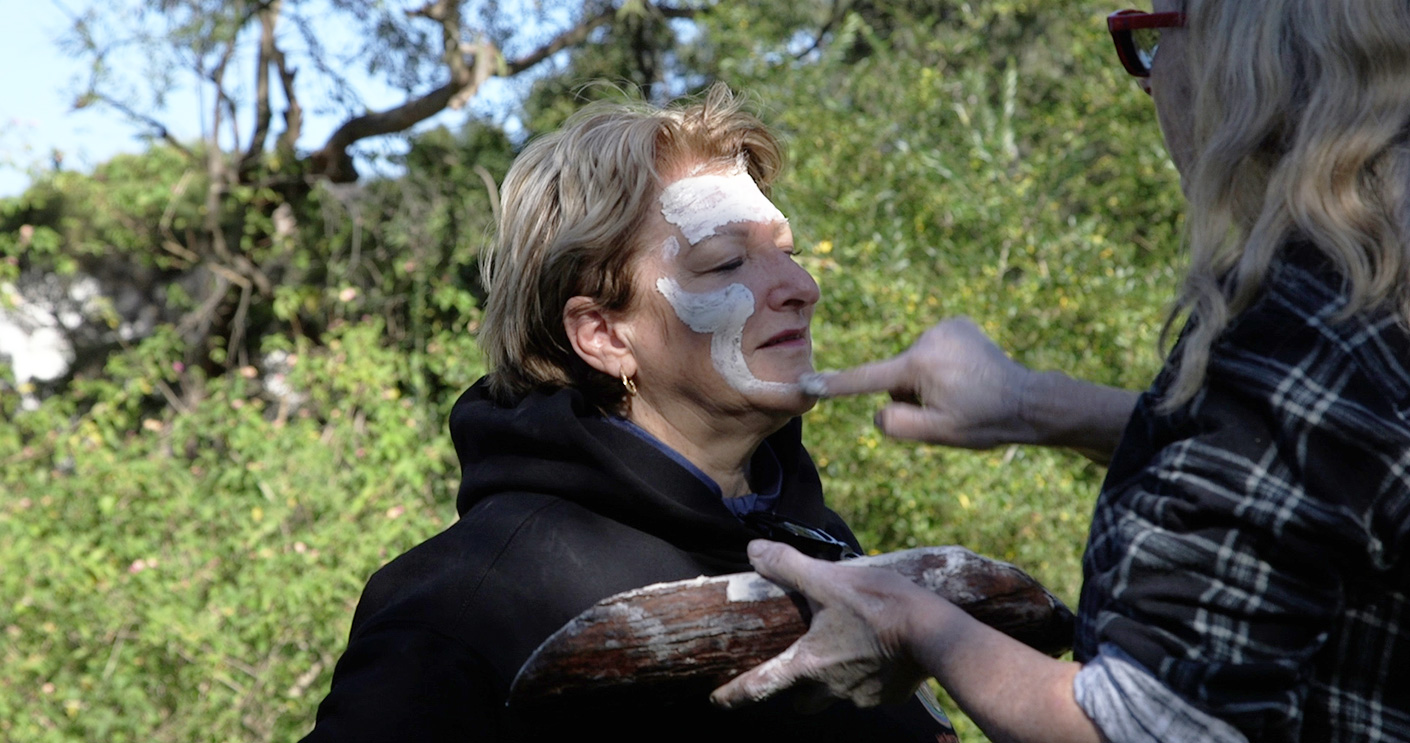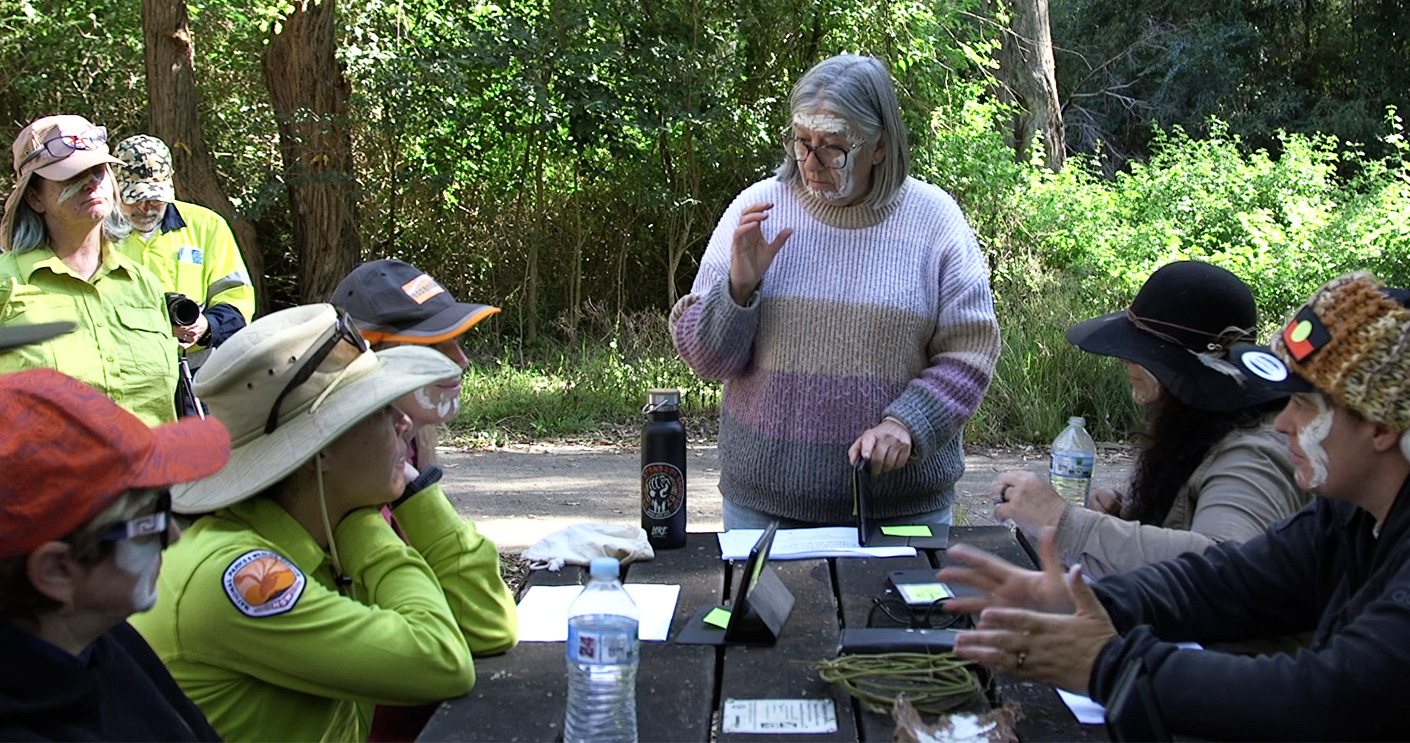Dr Jo Rey, Research Fellow in the Department of Indigenous Studies, has embarked on an historical journey as she and other Dharug women prepare to undertake the first cultural burn in Lane Cove National Park since 1788.
An important practice for many Indigenous nations, cultural burning – also known as ‘cool burning’ – involves small, controlled blazes during the early dry season to remove undergrowth and prevent larger, more destructive fires, while encouraging native seeds to propagate. With climate change anticipated to increase the number and severity of bushfires in Australia, there is growing interest in the revival of cultural burning and other Indigenous forms of caring for Ngurra/Country.
Together with fellow Dharug women, Dr Rey is drawing on thousands of years of knowledge to explore how Indigenous ways of knowing, being and doing can inform and co-exist with contemporary land management practices when Country is a colonised, urban environment.
Dr Rey’s doctoral thesis, completed in 2019, explored cultural continuity through the perspectives of seven Dharug women. Now, she is approaching the culmination of a three-year postdoctoral project that explores how Indigenous knowledge and practices are being applied within Country in three locations: Blacktown Native Institution Site, Shaws Creek Aboriginal Place and Browns Waterhole (BWH) in Lane Cove National Park. BWH is near Wallumattagal Campus and will be the site for the planned cultural burn later this year.
“Wallumattagal’s connections to Durrumburra/Lane Cove River, Browns Waterhole and the Lane Cove National Park, and their proximity to our campus, offers an opportunity to activate Dharug cultural caring, knowledges and relationships, including through fire, within what is otherwise a highly urbanised area of Dharug Ngurra,” Dr Rey says.
Dharug women have collectively been working with different partners, organisations and stakeholders to ensure the transfer of Dharug knowledge about caring for Country across the three city sites. Preparations for the cultural burn began in 2020, with the women working closely with the Department of Planning and Environment’s Cultural Fire Management Unit, City of Ryde Council, NSW National Parks and Wildlife Service, the NSW Rural Fire Service, and colleagues at Macquarie.
“Underpinning this journey has been the consciousness of ‘yanamawa budyari gumada’ – Dharug-dalang for ‘walking with good spirit’. There has been generous participation across all the stakeholder groups and organisations involved, and relationships between the various partners have been strengthened through this work,” says Dr Rey.
“It sets a precedent for the future so that other inner urban locations can be nurtured and healed through the traditional custodians’ relationality with the land and the Dharug speaking peoples.”
In May, Dharug women camped together for the first time since colonisation near Browns Waterhole, with the support of government departments and the local council. Six Dharug women led the camp alongside two Dharug men as camp managers, in addition to park rangers and Macquarie academics.

Dharug women Dr Rosemary Norman-Hill and artist Venessa Strazlynski prepare for the camp’s opening ceremony
Over the course of three days, the women connected with the site, sharing traditional Dharug knowledge and practices with the group. The camp began with a smoking ceremony, using ochre from the Blue Mountains, before a series of activities to help build a knowledge base for the area. These included the development of an animal and plant database to understand the living creatures that occupy the area, training in the use of key equipment for the cultural burn, bush medicine and art workshops to continue the transfer of knowledge, and a clean-up of the site.
Dr Rey is now making final preparations ahead of the anticipated burn in early spring of this year. In addition to its historic significance, the cultural burn will return Dharug presence into a cultural relationship with Country, as well as inform others how Indigenous cultural practices, perspectives and ways of knowing, being and doing can be used to protect and care for Country for sustainable futures.


 Back to homepage
Back to homepage
I’m so happy to see this project is coming to fruition. Congratulations to everyone involved and thank you for continuing to care for Ngura.
Thanks for a great article! Very interesting and timely with our summer approaching. Good luck with the cultural burn/cool burn. Just wondering what the Dharug words for cool burn are?
Didgerigura!
Thanks Greg. We need our allies, every step of the way!
yanama budyari gumada,
Jo
Congratulations to all involved. It is so important to reintroduce these Cultural burns to address the challenge of overgrowth since colonisation in the right way and provide a space for Dharug Cultural practices.
Absolutely brilliant work! Such a joy to read about this beautiful and deeply nourishing project. Returning cultural fire to Country, congratulations to everyone 🙂
Thanks Lauren! Without you, the spark would not have been lit!
Walking together, step by step,
Jo